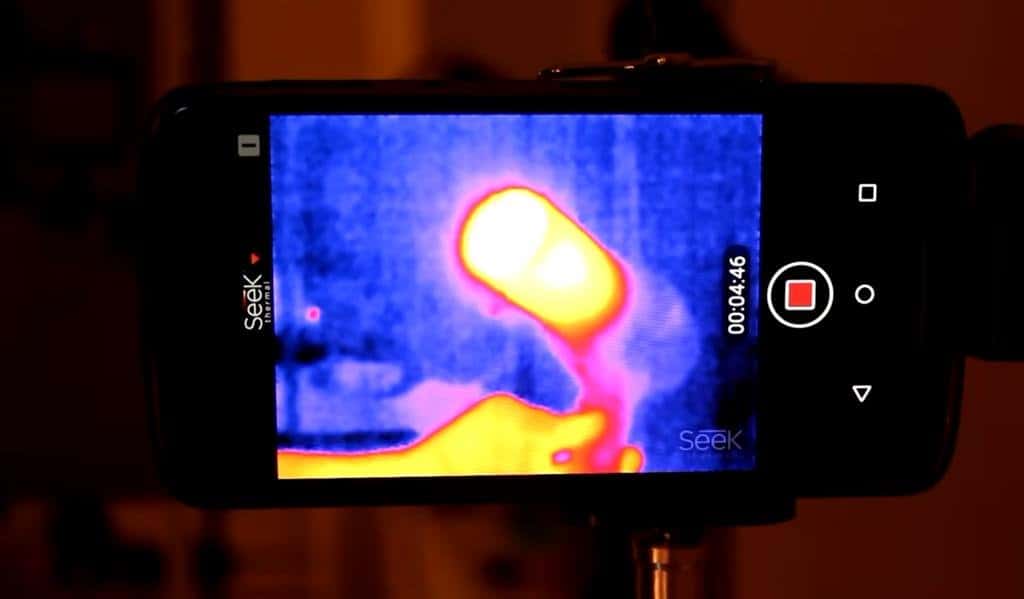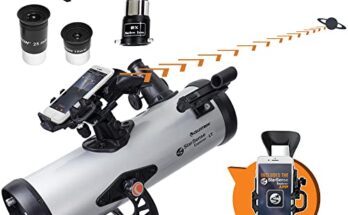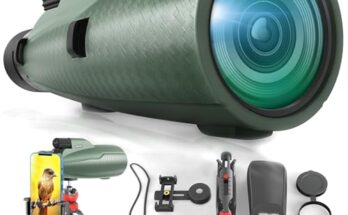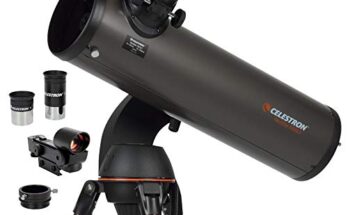A thermal camera can see as far as its sensor’s sensitivity and the size of the objects allow, typically up to a few hundred meters. Detection distance also depends on conditions like weather and obstructive elements.
Thermal cameras stand out as indispensable tools in various industries due to their ability to detect heat signatures. By capturing different levels of infrared radiation, these cameras produce images even in complete darkness or through obscurants like smoke, haze, and light fog.
This capability enables multiple applications, from security surveillance to wildlife monitoring. The technology’s proficiency at long-distance viewing hinges on factors such as the camera’s resolution and the ambient temperature gradient. High-quality sensors in thermal cameras empower professionals to discern temperature variations from afar, hence facilitating proactive measures in safety, search and rescue, and preventive maintenance. Understanding the influential aspects that affect a thermal camera’s range can help users select the appropriate model for their specific needs.
Thermal Camera Basics
Unlock the invisible world with thermal cameras, your guide to seeing heat signatures from afar. Whether observing wildlife at night or finding heat leaks in a building, these powerful tools provide a unique view beyond human sight. Let’s dive into the world of thermal imagining and discover just how far these cameras can see.
What Is A Thermal Camera?
Thermal cameras, also known as infrared cameras, detect and measure heat emission from objects. Unlike regular cameras, they don’t need light to produce an image. They paint pictures based on temperature differences, revealing a world unseen by the naked eye.
Key Components And Functionality
Thermal cameras consist of several key parts.
- Lens: Focuses infrared energy onto the detector.
- Detector: Senses infrared energy and creates a thermogram.
- Thermogram: A temperature pattern turned into an electric impulse.
- Signal processing unit: Translates the impulse into data for display.
Together, these components capture and translate heat signatures into visible images. No matter the darkness or smoke-filled environment, thermal cameras offer a clear thermal view that aids in various applications.
Factors Influencing Thermal Imaging Range
Understanding the factors influencing thermal imaging range is key to estimating how far a thermal camera can see. Different elements can impact the performance of a thermal camera. Here, we explore the main factors affecting its range.
Lens And Detector Specifications
The quality and design of a thermal camera’s lens and detector play a crucial role in its range. The detector’s resolution and the lens’ focal length determine the detail and distance at which thermal differences can be discerned. Consider these specifications:
- Detector Resolution: Higher resolution provides clearer images, enabling detection over greater distances.
- Focal Length: A longer focal length lens targets farther objects with more precision.
Environmental Conditions
Environmental factors greatly influence a thermal camera’s range. Weather and atmospheric conditions can either enhance or hinder thermal detection. Common environmental impacts include:
| Condition | Effect on Range |
|---|---|
| Humidity | High humidity can absorb thermal energy, reducing range. |
| Dust or Smoke | Particulates can scatter thermal radiation, also reducing range. |
Target Size And Temperature
Key factors are the size and temperature of the target relative to its surroundings. A larger and hotter object is easier to detect at a distance than a smaller, cooler one. Some key points include:
- Size matters: Larger objects emit more thermal energy, increasing visibility.
- Temperature difference: The greater the contrast in temperature between the object and the background, the further away it can be detected.
Real-life Performance Of Thermal Cameras
The real-life performance of thermal cameras tends to be a subject of widespread curiosity. Unlike traditional cameras, thermal cameras have the ability to detect heat signatures of objects and people, making them vital in a range of applications from security to wildlife monitoring. But one question often arises: How far can these devices really see? The answer is not straightforward, as it depends on factors like model specifications, weather conditions, and the size of the heat-emitting object in question. Let’s dive deeper into the comparative analysis of different models and examine some case studies that show the successes and limitations of this intriguing technology.
Comparative Analysis Of Different Models
Different thermal cameras come with varied ranges and capabilities. For instance, high-end models used by professionals can detect human-sized heat signatures at distances up to 1,500 to 2,000 meters in optimal conditions. On the flip side, lower-end models may only provide effective coverage up to a few hundred meters. Here’s a quick comparison:
| Model | Range (Humans) | Range (Vehicles) |
|---|---|---|
| Entry-Level | 100-300 m | 300-1,000 m |
| Mid-Range | 500-1,000 m | 1,000-2,000 m |
| Professional | 1,500-2,000 m | 2,000-4,000 m |
Environmental conditions, like fog, rain, and humidity, can also affect a camera’s performance. Thermal cameras excel in these conditions better than visible-light cameras, but range may still decrease.
Case Studies: Successes And Limitations
Thermal cameras have had their shining moments, especially when it comes to search and rescue operations or wildlife studies. For example:
- A lost hiker was found in the woods at night after a drone-mounted thermal camera spotted their heat signature nearly 1 km away.
- In wildlife monitoring, scientists were able to track nocturnal animal patterns over great distances, highlighting the cameras’ long-range capabilities.
Yet, the technology is not without its limitations:
- Heat from the environment can mask or interfere with the signatures of smaller animals, limiting detection.
- Thermal cameras struggle to differentiate objects with similar temperatures.
Understanding these factors implies that the effective range of a thermal camera is a flexible concept, shaped by both the tool itself and its operational environment.

Credit: www.amazon.com
Limitations And Misconceptions
Exploring the capabilities of thermal cameras invites various questions. One key topic is recognizing their reach’s actual spans. In this section, we delve into the often-overlooked limitations and clear up common misconceptions about thermal imaging.
Common Myths About Thermal Imaging
Thermal cameras, while advanced, are surrounded by myths:
- Unlimited Range: Many believe thermal cameras can see an infinite distance. This is not true.
- Through-the-Wall Detection: The notion that they can see through walls is mistaken. They cannot.
- Clear Image Always: Another myth is that these cameras always produce crystal-clear images. Various factors can affect image quality.
Understanding The Practical Limits
| Factor | Impact on Range |
|---|---|
| Camera Resolution | Higher resolution allows for greater detection ranges. |
| Lens Type | Specific lenses are designed for varying distances. |
| Atmospheric Conditions | Smoke, dust, and humidity can limit visibility. |
| Size of Object | Larger objects can be detected at greater distances. |
The reality is, the detection range for a standard thermal camera generally spans not more than a few kilometers, with the max distance profoundly influenced by the above factors.
Enhancing Thermal Camera Capabilities
Thermal cameras are powerful tools that let us see heat instead of light. But, how far can they see? The answer is not simple. It depends on many things. Camera quality, size of the object, and even weather affect a thermal camera’s range. Luckily, there are ways to make thermal cameras work better and see further.
Technological Advances And Innovations
New technology is changing what thermal cameras can do. We see upgrades in sensors and optics that allow cameras to capture sharper images from afar. Smarter software also helps by making heat patterns clearer.
- High-definition sensors increase image clarity
- Enhanced zoom capabilities help see details at a distance
- Software filters and algorithms identify objects better
These advances mean that modern thermal cameras are more powerful than ever before.
Tips For Maximizing Range And Effectiveness
To get the most out of your thermal camera, use these tips:
- Choose the right lens – A lens with a longer focal length sees farther.
- Keep it maintained – Clean lenses and updated software ensure top performance.
- Use tripods or stable platforms to avoid blurry images from hand shake.
- Understand weather impact – Rain, fog, and humidity can limit range.
Follow these steps, and your thermal camera’s range can improve significantly. Always remember, though, even with these enhancements, the basic laws of physics still set the ultimate limit.

Credit: eightify.app
Future Of Thermal Imaging
The future of thermal imaging points to a horizon where the limits of visibility extend far beyond current capabilities. This ever-evolving technology not only enhances night vision but also revolutionizes how industries perform inspections, security, and surveillance.
Emerging Technologies And Industry Trends
Thermal imaging innovations continue to reshape the landscape. Here’s what’s on the rise:
- Enhanced Resolution: Sharper images for precise analysis.
- Miniaturization: Smaller cameras with robust features.
- Integration: Thermal features in everyday devices.
- AI-Assisted Processing: Smart systems for quicker decisions.
- Longer Range Detection: Cameras that see further and clearer.
New sensors promise greater range and clarity, even in total darkness or through obscurants like smoke or fog.
Potential Applications In Various Fields
Thermal cameras will touch countless aspects of life:
| Field | Application |
|---|---|
| Healthcare | Non-invasive diagnostics and monitoring |
| Public Safety | Search and rescue, fire fighting |
| Automotive | Driver assistance, autonomous vehicles |
| Manufacturing | Equipment maintenance, quality control |
| Wildlife Management | Animal research and conservation |
From medical advancements to smarter cities, the influence of thermal imaging is vast. It will shape the future and enable progress.

Credit: www.amazon.com
Frequently Asked Questions For How Far Can A Thermal Camera See?
What Determines A Thermal Camera’s Range?
The range of a thermal camera is determined by factors such as its sensor sensitivity, lens focal length, and atmospheric conditions. High sensitivity and longer lenses extend the detection range, while fog or rain can reduce it.
Can Weather Affect Thermal Camera Visibility?
Yes, weather conditions like fog, rain, and humidity can impact the performance of thermal cameras. They can scatter or absorb infrared radiation, which reduces visibility and effective range.
Is Thermal Camera Range The Same At Night?
Thermal cameras operate independently of visible light, so their range remains consistent both day and night. They detect heat signatures, so lighting conditions do not typically affect their range.
How Does Resolution Affect Thermal Camera Distance?
Higher resolution in thermal cameras means more pixels and clearer images. This allows for better detection and recognition of objects at greater distances compared to lower resolution cameras.
Conclusion
Understanding the capabilities of thermal cameras is crucial, especially for industries relying on night-time surveillance and search operations. Range varies with factors like resolution and lens type. For those needing to gauge distances in low visibility, picking the right model is essential.
Remember, technological advancements are constantly pushing the boundaries of what these powerful devices can achieve.



